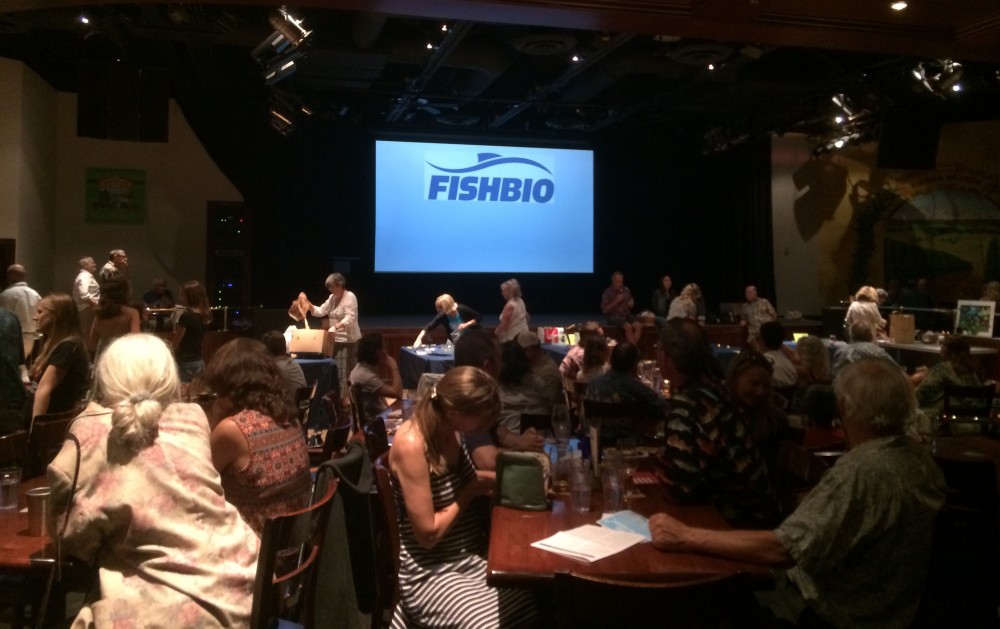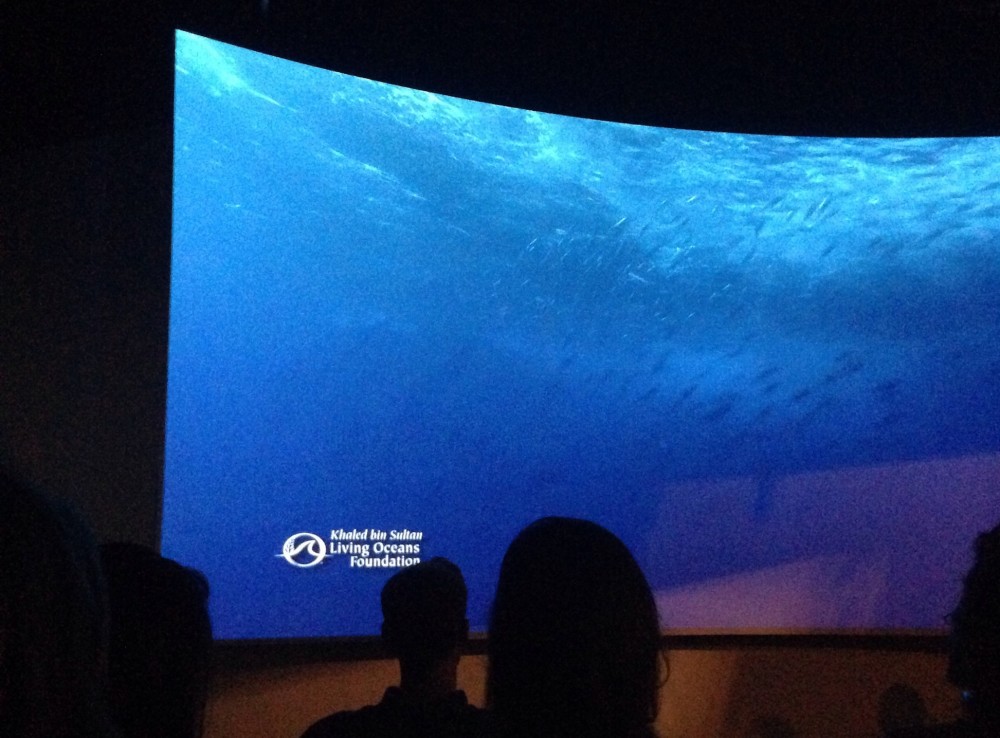Wednesday October 14, 2015
 When it comes to sharing a story, nothing captivates quite like a film, and in the age of viral videos, films can take on a life of their own and spread messages to a wide audience. We’ve long believed in the power of videos at FISHBIO, and we recently attended a number of different environmental film festivals to see how others are using film to get the word out. In September, Friends of Butte Creek held their 9th Annual Wild & Scenic Film Festival at the Sierra Nevada Brewery. The theme for the festival this year was Wildlife, Wild Spirits, and Wild Adventures, and the array of short films ranged from two to 41 minutes in length. Some memorable entries included Sticky, a beautiful animated film on the extinction of a stick insect and its rediscovery 80 years later on a single bush on the side of a remote sea stack. Earthbook was a fast paced comical film depicting the history of the planet in a Facebook timeline fashion.
When it comes to sharing a story, nothing captivates quite like a film, and in the age of viral videos, films can take on a life of their own and spread messages to a wide audience. We’ve long believed in the power of videos at FISHBIO, and we recently attended a number of different environmental film festivals to see how others are using film to get the word out. In September, Friends of Butte Creek held their 9th Annual Wild & Scenic Film Festival at the Sierra Nevada Brewery. The theme for the festival this year was Wildlife, Wild Spirits, and Wild Adventures, and the array of short films ranged from two to 41 minutes in length. Some memorable entries included Sticky, a beautiful animated film on the extinction of a stick insect and its rediscovery 80 years later on a single bush on the side of a remote sea stack. Earthbook was a fast paced comical film depicting the history of the planet in a Facebook timeline fashion.
Another notable film was Chuitna, More than Salmon on the Line, a call to action to stop a proposed open pit coal mine in the headwaters of one of the few remaining wild salmon watersheds in Alaska. The film called for preserving the Chuitna’s five Pacific salmon species so they can continue to support subsistence, recreational and commercial fisheries. Video is a fantastic medium for bringing attention to a cause, and it is impossible to not feel empathy for the people featured in this film whose home and way of life is under threat.
 The staff from our Santa Cruz office also recently attended a screening of the Beneath the Waves Film Festival at the Monterey Bay National Marine Sanctuary Exploration Center in Santa Cruz. The festival is coordinated by students and scientists, and included submissions from amateurs and professionals alike showcasing the world of the oceans. Some interesting films included a pair of videos by NOAA Fisheries. One film discussed the agency’s work on Southern Resident killer whales, including investigating which prey the whales are eating based on fish scales and whale poop. It turns out over 70 percent of the Southern Resident killer whale diet is Chinook salmon, and in the summertime, the vast majority of these salmon can be traced back to the Fraser River watershed. The other film described surveys to monitor endangered Stellar sea lions in Alaska’s Aleutian Islands, including the use of remote cameras and a drone that captures aerial footage without disturbing the animals.
The staff from our Santa Cruz office also recently attended a screening of the Beneath the Waves Film Festival at the Monterey Bay National Marine Sanctuary Exploration Center in Santa Cruz. The festival is coordinated by students and scientists, and included submissions from amateurs and professionals alike showcasing the world of the oceans. Some interesting films included a pair of videos by NOAA Fisheries. One film discussed the agency’s work on Southern Resident killer whales, including investigating which prey the whales are eating based on fish scales and whale poop. It turns out over 70 percent of the Southern Resident killer whale diet is Chinook salmon, and in the summertime, the vast majority of these salmon can be traced back to the Fraser River watershed. The other film described surveys to monitor endangered Stellar sea lions in Alaska’s Aleutian Islands, including the use of remote cameras and a drone that captures aerial footage without disturbing the animals.
Other memorable videos included a dive with manta rays in striking black and white film, and a farcical silent movie on the benefits of marine protected areas to diverse stakeholders. The Sanctuary coupled the film screening with science talks from two leading scientists in the Monterey Bay area. Dr. Barbara Block of Stanford’s Hopkins Marine Station disused her work tracking tunas and other top ocean predators across the “blue Serengeti” of the Pacific Ocean, and Dr. Mary Silver of UC Santa Cruz discussed how changing ocean conditions can affect tiny plankton, which in turn can influence many other animals up the food chain.
We’ve been ramping up our own video production here at FISHBIO over the past year, and even participated in our first film festival at the recent American Fisheries Society Annual Meeting in Portland, Oregon, where we screened our video on the Stanislaus River Honolulu Bar restoration project. You can subscribe to our YouTube page to receive all of our latest video updates. We fully embrace the power of film to communicate about the work that we do, the technology that we use, and the rivers, fish, and people that we care about in a fun and impactful way. We have many more films in the works, and look forward to sharing them with you!
